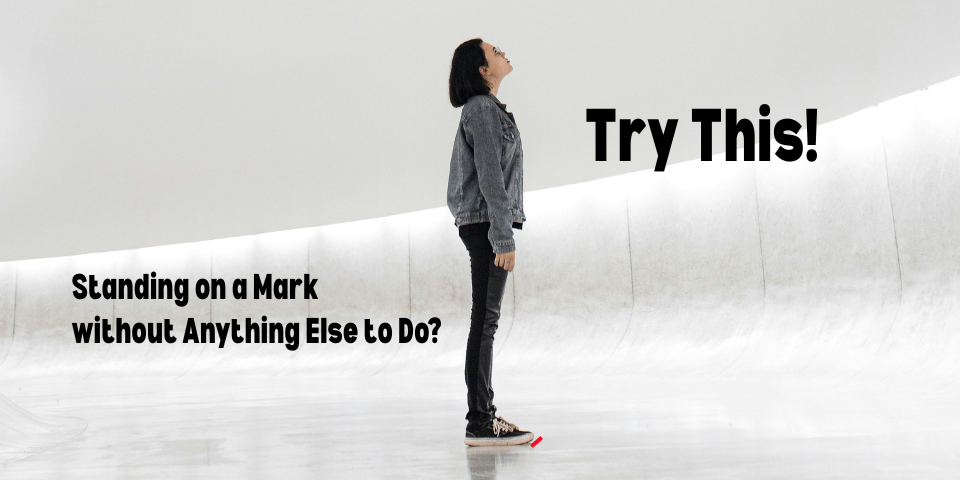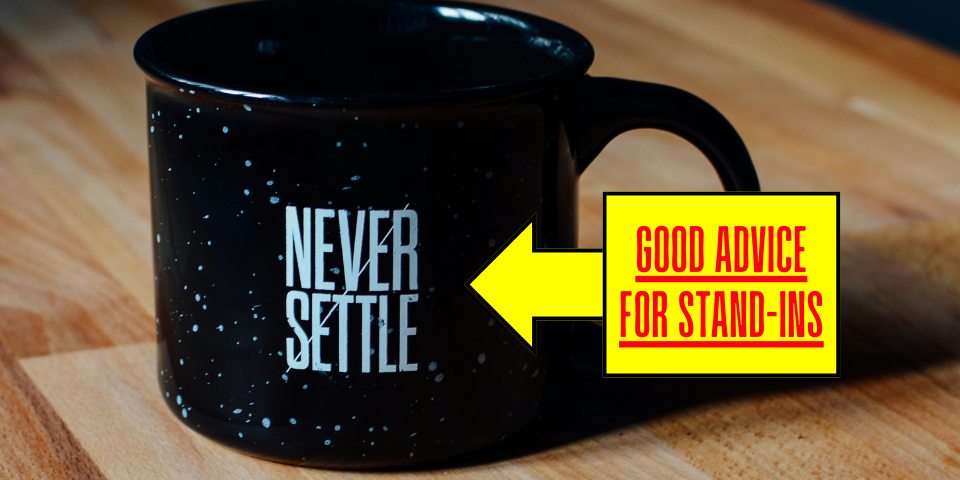Recently I did some research on setting up an in-home studio for self-taping auditions for my acting career. In addition to researching cameras and backdrops, I realized I needed to research lights. However, I didn’t know anything about how to light, even despite years of working as a stand-in on majors films and television shows. So I took to YouTube to find lighting tutorials.
I found an excellent tutorial on lighting — specifically, what is known as “three-point lighting” — and it was incredibly helpful for understanding very basic lighting principles.
Here’s the video. It’s by Steven DiCasa, and he walks you through what each light in three-point lighting does. Below the video are some of my takeaways and some added information based on my stand-in experience that are especially helpful for stand-ins to understand when it comes to lighting:
The Three Lights in Three-Point Lighting
As explained in the video, there are three basic lights involved in lighting a subject (e.g., a stand-in) using three-point lighting. Those lights are the key light, the fill light, and the hair light. The hair light is also more generally known as the back light.
The Key Light
The key light is the main source of light on a subject. When you are standing in, often it will be a light that is at about a 45° angle from you, either on your right or on your left. It is “key” in the sense that it is most important. That is, the key light is the most important light.
A key light can be a physical light, but it can also be sunlight (whether from the sun outside or artificial sunlight streaming through a set’s windows on a soundstage). The key light will usually make one side of your face brighter than the other, causing the other side of your face to become more shadowed.
The Fill Light
The next most important is the fill light. When you are standing in, often the fill light will be a light that is at about a 45° angle from you, on the side opposite where the key light is. So, if the key light is on your left, on your right is the fill light.
The fill light aims to dissipate the shadows on your face created by the key light. Essentially, the fill light “fills in” the dark areas of your face with light. It is not as bright as the key light, meaning that the shadowed side of your face will not be as bright as the side lit by the key light.
Sometimes you might simply see a reflector, a bounce card, or even a white piece of cardboard or cloth instead of a fill light. This is essentially taking the ambient light and reflecting it into you to light your more shadowed side. These are doing basically the same as a fill light: They are dissipating the shadows on your face and “filling them in.”
The Hair Light (aka the Back Light)
The hair light — also known as the back light — is a light behind you, aimed at you. Its purpose is to add a thin highlight to your silhouette to help visually separate you from the back background. Essentially, if you were to look at yourself in a monitor, you would find the effect of this light along the edge of your body.
It is called a “hair light” because its effect can often be seen in the hair of the subject (e.g., the stand-in). However, the more general and perhaps more common term is “back light” because it is a light from in the back and its effect can be seen not just in the subject’s hair but also the rest of the subject’s body.
Other Lights
If you are working on a green screen, it usually needs to be lit, too. So, in studios with green screens, you may also see lights used in various ways to evenly light the green screen. This helps to even out the green color.
While the green screen may appear to you to have an even color, if the green screen is made of fabric, it may have creases in it. Those creases create small shadows that can darken or lighten those particular areas of the green screen, changing the tone of green in it, and thus making it harder to subtract one particular type of green from the image when processed in post-production.
Two lights on opposite sides behind the subject pointed at about a 45° angle at the screen can even out the green. Barn doors on the lights or flags on stands may help to cut that light to avoid it from spilling onto the subject.
If you are working on blue screens or white backgrounds, they too may also be lit. Of course, so may regular sets. Regular sets may be lit by lights outside the three-point lighting technique.
For example, you may see “practical lights” lighting a set. Practical lights are working lights of a practical use on a dressed set. For example, desk lamps, lamps in a living room, overhead lights, lit signage, etc., that are used as functional set dressing are considered practical lights. Practical lights can also be used as key lights, fill lights, and back lights.
Of course, if you are in a studio environment, you may find lights in the grid above you working, and outside windows you might find lights acting as the sun providing sunlight or some other outdoor light (for example, street lights at night).
How Lighting Knowledge Helps Your Stand-In Work
Not only does understanding three-point lighting help you to better understand the terminology you might hear the DP use in designing and directing a shot, you can better anticipate what might be needed of you with respect to lighting when you are standing in.
Furthermore, you might be able to better predict when a scene’s setup should be done given where a production is in setting up three-point lighting.
Also, understanding lighting makes what is going on around you on set less chaotic. All of the moving parts going on around you when you are standing on a mark make a lot more sense when you understand the principles of three-point lighting.
That said, different DPs light in different ways. Some are very particular, while others are more relaxed. Understanding a particular DP’s needs helps you to better understand how you as a stand-in can or may service those needs — or not.
If a DP needs a particular body size or a particular hair color, knowing lighting will help you understand how your body size or hair color may help or make more problematic the lighting of the shot. If an actor has a larger nose but the stand-in has a much smaller nose, that difference may means that the stand-in is lit in a way that looks good for the stand-in but bad for the actor.
Some DPs can adapt to those differences. Others cannot or are not willing to. Of course, the better the match of the stand-in to the actor usually means that when the actor arrives on set, the fewer lighting and camera adjustments are needed, especially when shots need to be set up precisely in a minimum of time.
Personal Experience
The next time I was standing in on a set after having watched Steven DiCasa’s three-point lighting tutorial video, all of the lighting going on around me made so much more sense! It was exciting to have an understanding of what the DP and other crew members were doing in terms of lighting, when for all of these years prior I never really was able to grasp the lighting process. I could relate better to what the DP needed or was looking for rather than thinking that lighting was some kind of mysterious art and not being able to relate to the DP’s needs.
The three-point lighting technique on the surface is very simple, but for all these years the lighting process had seemed so complex. With this new information about lighting, I’ll be watching with fresh eyes new iterations of the three-point lighting technique and how DPs solve problems lighting actors using that technique.
How has knowledge of lighting helped your stand-in work? What exciting challenges have your seen productions taken on when lighting a shot you were standing in on? Share your experiences with lighting and stand-in work in the comments below!






Leave A Comment